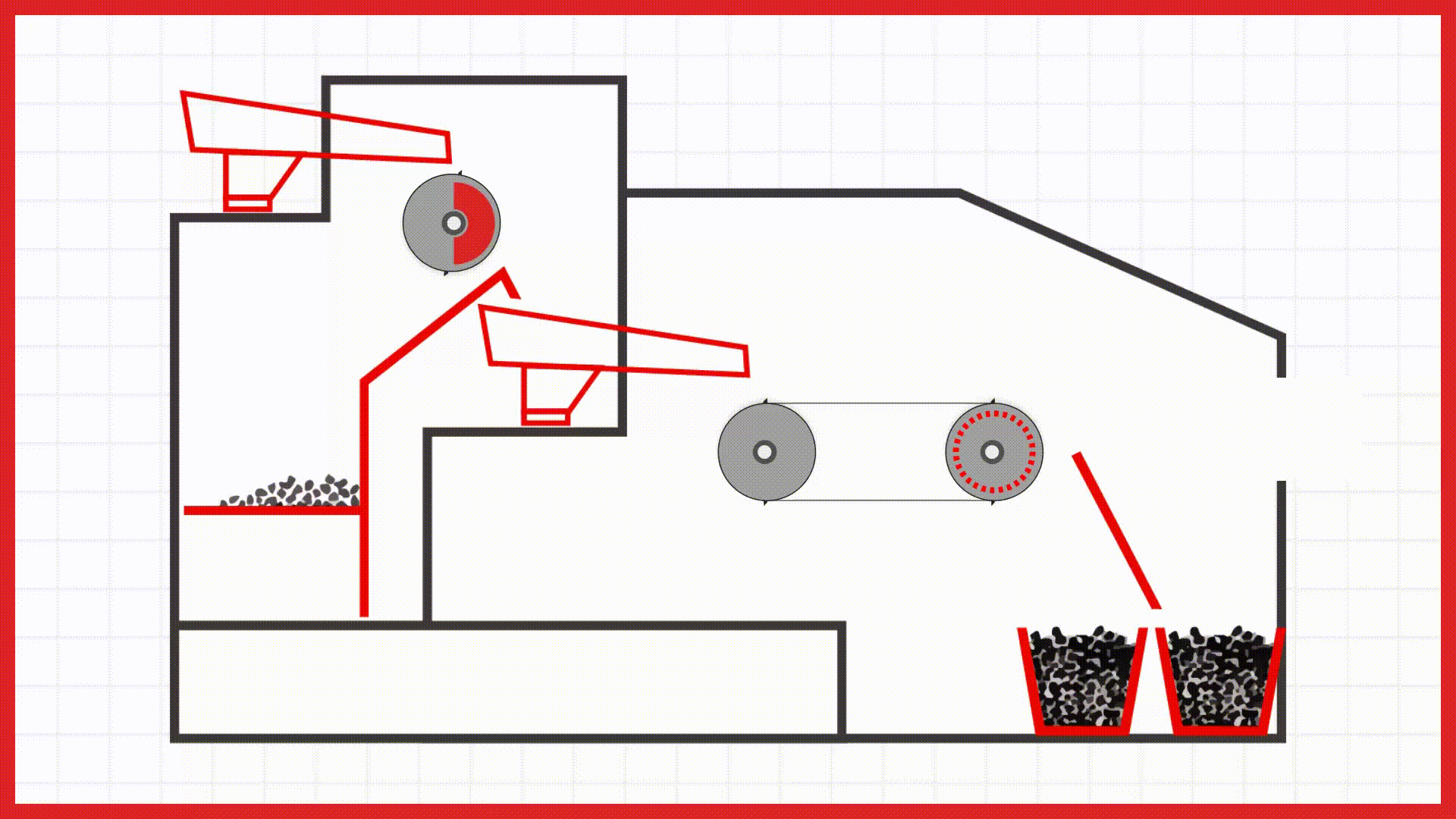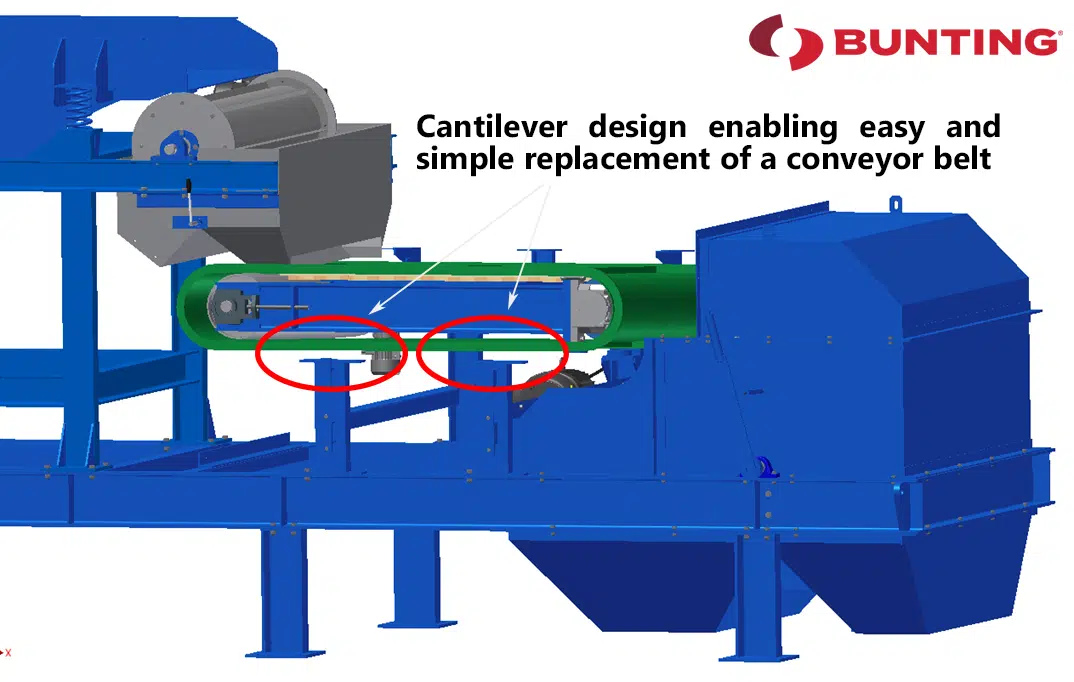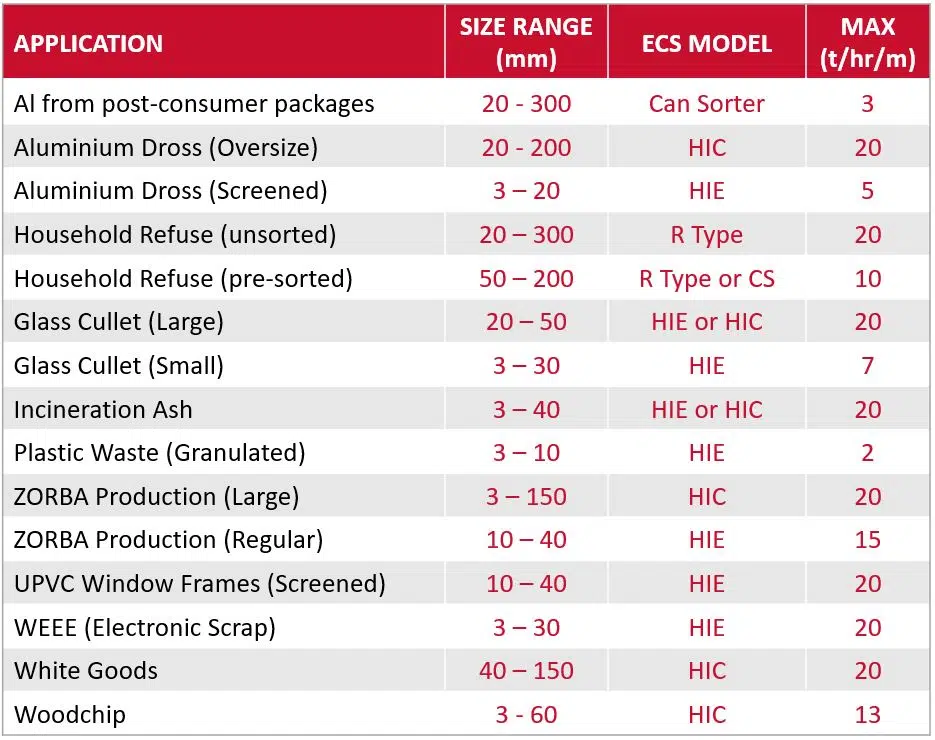
9 月 . 12, 2024 15:47 Back to list
The Eddy Current Separator is used widely in the recycling industry to either recover or remove non-ferrous metals from non-metallic materials. Different designs enable the separation of small (down to 3mm) and large non-ferrous metals.
The Eddy Current Separator (ECS) utilises magnetic forces to physically repel non-ferrous metals and enables separation from non-conductive materials. The eddy current separator is often supplied as part of a metal separation module with a first-stage drum magnet removing ferrous metals.
To maximise the separation and recovery of non-ferrous metals,developed four different eddy current separator models:
Eddy Current Separators commonly form part of a Metal Separation Module as a two-stage metal separator. Material initially passes over a Permanent Drum Magnet to remove and recover ferrous metals, leaving a non-magnetic fraction. The Eddy Current Separator then separates non-ferrous metals from the non-conductive remains.
An eddy current separator is a dual pulley conveyor system, where the non-metallic rotor cover houses an independently rotating high-speed magnetic rotor. Separation occurs when a non-ferrous metal particle (e.g. aluminium, copper or zinc) is conveyed into the magnetic zone. The non-ferrous metal particle is exposed to rapidly changing magnetic polarity. This induces ‘eddy currents’ into the particle generating an electrical current (Fleming’s left-hand rule) that subsequently creates its own magnetic field. The two magnetic fields oppose each other (i.e. North vs North pole repulsion), causing the repulsion of the non-ferrous metal particle and change in trajectory. The measured positioning of a splitter enables the separation of non-ferrous metals from non-metallic material due to the altered and unaltered material trajectories.
The speed of the magnetic rotor is dependent on the number of poles on the magnetic rotor and the application.

To limit production downtime, the model HIC eddy current separator design enables the swift changing of the main conveyor belt. The HIC eddy current separator features a cantilever jacking system fitted beneath the hinge mechanism on the frame. After removing the side guards and the drive belts on the rotor motor, the jacking system lifts and then holds the conveyor from one side. This allows the belt to be easily and simply slipped onto the pulleys. This significantly reduces the time needed to change a belt.

In many other designs, replacing the belt is time-consuming and involves the removal of the main eddy current rotor.

Eddy current separators are used to either recover non-ferrous metals for recycling (e.g. shredded cars, aluminium beverage cans from waste) or to cleanse a waste material of non-ferrous metals (e.g. cullet, plastics). Typical applications include:

Note: All stated capacities are for indication purposes only. Specific capacities are subject to confirmation once an application has been reviewed or after laboratory tests.
Latest news
Unveiling the Power of Eddy Current Separator
NewsSep.25,2024
Transform Your Home Recyclin:home metal shredder
NewsSep.25,2024
The Future of Waste Management with Recycling Line Picker
NewsSep.25,2024
The Benefits of a Metal Recycling Plant
NewsSep.25,2024
Revolutionize Material Separation with Onwang Technology
NewsSep.25,2024
Innovative Waste Management: Unveiling the MSW Sorting Plant
NewsSep.25,2024